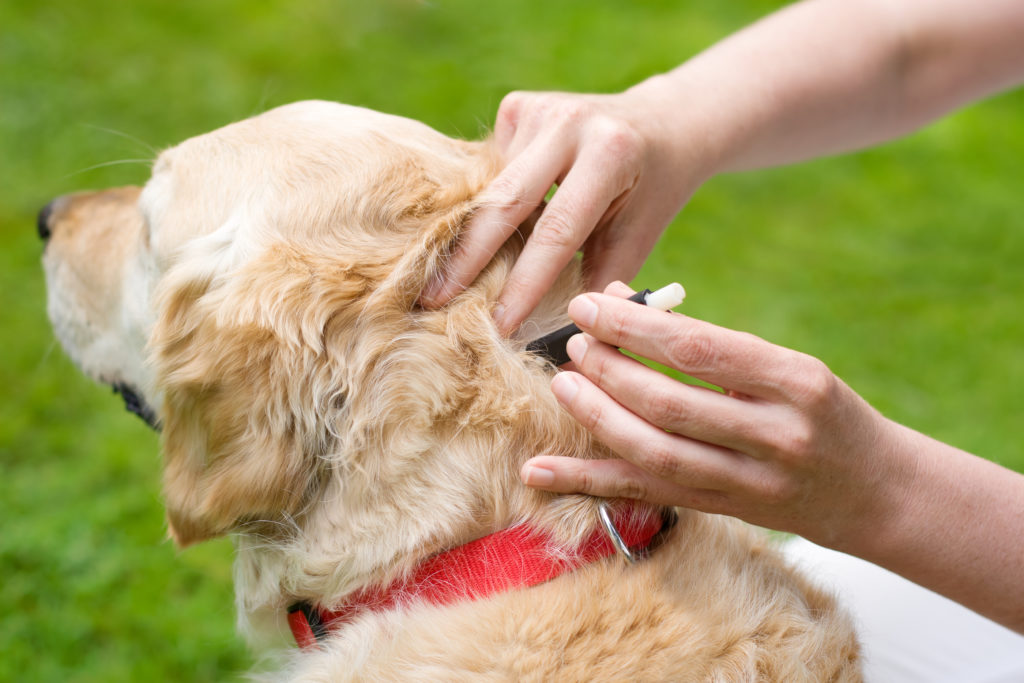At myCallADoc, we care about keeping your whole family healthy — including your pets.
The summer season often means a rise in ticks, which can latch onto your canine companion and cause health issues. Ticks are blood-sucking bugs with flat, oval bodies that swell when they eat. These parasites like to feed on you and your pets.
While tick bites can be harmless and produce no noticeable symptoms for humans, they can sometimes cause allergic reactions in dogs. In rare cases, ticks can cause anemia, paralysis, and Lyme disease.
We’ve put together a guide to help you understand where ticks live (geographically and in which types of climates), how they can threaten your dog’s health, and how to treat your pet if they have a tick.
Where Do Ticks Live?
Ticks live all over the United States. You can find at least one kind of disease-carrying tick almost anywhere in the U.S., though some places have more than others.
Ticks love hot weather, so in places with warm climates, tick activity tends to increase. Ticks are also active during the colder months, so it’s best to be prepared year-round.
When it comes to their habitat, ticks tend to live in wooded areas with lots of shrubs, tall grass, weeds, underbrush, and leaf litter. These are all places that you and your dog might spend a lot of time in during the summer, which gives ticks plenty of opportunities to latch on.
How Do Ticks Affect Your Dog’s Health?
If a tick bites your dog, it can affect their health in a number of ways:
Allergic Reaction
A tick bite can cause an allergic reaction in your dog. If this happens to your dog, they may experience red, dry, or irritated skin, excessive itching or scratching, and hot spots.
Anemia
In rare cases, dogs may get anemia if a tick consumes enough of their blood.
Paralysis
Another rare complication dogs may experience from tick bites is paralysis, caused by certain female ticks when they release a toxin while feeding.
Lyme Disease
Bites from ticks can result in diseases like Lyme disease. Lyme disease is caused by a bacteria that some ticks carry, which can cause symptoms like fever, loss of appetite, reduced energy, and swelling of joints in dogs.
Other Diseases
There are a host of other diseases that ticks can spread to dogs, including Rocky Mountain Spotted Fever, Ehrlichiosis, Anaplasmosis, Babesiosis, and Bartonellosis — all of which can have serious health consequences.
How To Treat a Dog With Ticks
If you notice your dog has a tick, be sure to remove it immediately. Follow these steps for safe tick removal:
- Wear surgical gloves to prevent direct contact with the potentially disease-carrying tick.
- Use a pair of tweezers or a tick removal tool to grasp the head of the tick as close to your dog’s skin as possible.
- Pull with a firm, steady, upward motion.
- Put the tick in rubbing alcohol to kill it. Never crush a tick between your fingers, as the blood of a tick can be dangerous.
- After removing the tick, apply a disinfectant such as rubbing alcohol or iodine to the affected area to prevent infection.
- Keep the tick in a container so that it can get be tested when you take your dog to the vet. This can help determine if your pet is at risk of contracting a disease from the tick.
How to Use Nematodes to Treat Tick Infestation in Dogs
In some cases, dogs will get tick infestations. If this occurs, you can use nematodes, which are microscopic worms that feed on ticks. Like ticks, nematodes are parasites. They release their bacteria into the tick, which multiply and eventually kill the tick.
Nematodes are perfect for a tick infestation because they reproduce and produce offspring to search for new ticks. Nematodes will continue to feed on the ticks until they’re gone, and the nematodes eventually die off.
When you purchase nematodes, they come on a small sponge. Soak the sponge in a gallon of room temperature water, Then, pour the water into a spray bottle, and spray onto your dog’s coat, completely covering it to ensure even distribution.
You can also spray nematodes in your yard as well as your dog’s bed to get rid of the infestation around your home. If your dog gets a severe tick infestation, see a vet as soon as possible to get things under control.
Best Ways to Prevent Ticks on Dogs
The best way to prevent ticks on dogs is to use tick control products like oral medications, spot-on treatments, shampoos, tick dips, tick collars, powders, and tick sprays.
Consult with your vet for advice on the best product for your dog and your situation.
To reduce the chances of a tick latching onto your dog, you can learn how to keep ticks out of your yard, or keep your dog in the house as much as possible. While your dog needs to go outside to use the bathroom and get exercise, just make sure they’re not outside for extended periods of time, especially during the height of tick season.
When your dog does go outside, you can monitor them to make sure they don’t roam through wooded areas and high grass where ticks may be lying in wait. Try to keep your lawn, bushes, and trees trimmed to reduce the tick population in your yard.
Check your dog regularly for ticks when they come back indoors. Look between their toes, inside their ears, between their legs (in the “armpits”), and around their neck.
Natural Tick Repellants
Natural tick repellant can be an effective solution to get rid of ticks without the use of harmful chemicals.
Here’s how to prevent ticks on dogs naturally:
- Essential oils: Some essential oils that are proven to repel ticks include lemongrass, cedar, peppermint, and thyme. Apply some to your dog’s coat to keep ticks at bay.
- Garlic oil: Derived from garlic plants, garlic oil can be an effective tick repellant when applied to lawns. You may need multiple applications of garlic oil to see results.
- Turmeric oil: Turmeric, a common cooking spice, comes from the turmeric plant. Using its oil provides for a dog-safe tick repellant. Lightly spray on your dog’s coat to keep ticks away.
You can use these recommendations for natural tick repellant for cats as well.
Stay on Top of Your Health With Telemedicine
It’s not always easy to maintain your family’s health throughout the year, especially with ticks lurking around.
At myCallADoc, we’re committed to keeping every member of your family healthy all year long. To stay on top of your health, it’s best to see your doctor regularly.
You’re just a few clicks away from becoming a myCallADoc member and speaking to a doctor from anywhere, anytime.
Became a member today for 24/7 access to care >
This article is not intended as medical advice. Always check with your doctor before embarking on a new health and wellness plan



